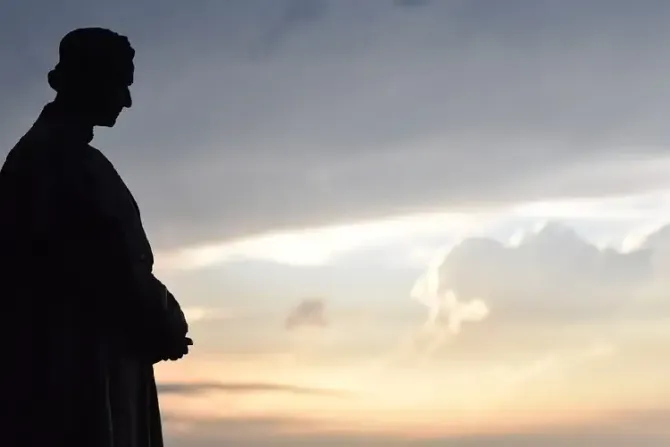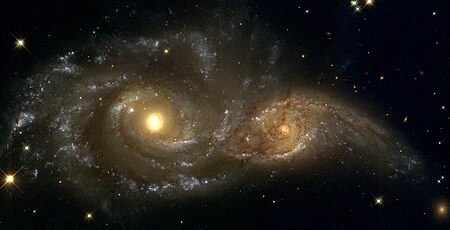Is a key prediction from Akita materializing?
To refresh us: there, at a convent, in northern Japan, in front of a weeping statue of Mary, a nun named Sister Agnes Sasagawa heard the Blessed Virgin’s voice, giving her several messages. The one we’re most interested in now took place on July 6, 1973. In it Mary allegedly said:
“Pray very much for the Pope, bishops, and priests,” the nun said she heard the “statue” say. “Since your Baptism, you have always prayed faithfully for them.
“Continue to pray very much…very much.”
The reason for that entreaty was explained in another message, on October 13 of that same year.
“The work of the devil will infiltrate even into the Church in such a way that one will see cardinals opposing cardinals, bishops against bishops,” Mary reportedly said. “The priests who venerate me will be scorned and opposed by their confreres…churches and altars sacked; the Church will be full of those who accept compromises and the demon will press many priests and consecrated souls to leave the service of the Lord.”
Curiously, ten years before, in 1963, an obscure German publication called Neues Europa had published what it claimed was a copy of the third Fatima secret. We know now that it wasn’t the actual secret (which the publication claimed it had intercepted from cables sent to John F. Kennedy and Nikita Khrushchev). There was much said about coming global disasters. It was also a warning of war. The relevant part, for our discussion here, was what it said about the Church — for it was almost word-for-word what Sister Sasagawa would report a decade later.
Had she read the Neues Europa “secret,” despite its obscurity? Or did Akita simply confirm it?
‘There will also come a time of the hardest trials for the Church,” the publication quoted Mary as saying.
“Cardinals will be against Cardinals and bishops against bishops.
“Satan will put himself in their midst.
“In Rome, also, there will be big changes. What is rotten will fall, and what will fall must not be maintained. The Church will be darkened and the world plunged into confusion.”
Now — half a century later — one can be excused for wondering if at least that part of the alleged predictions is unfolding before our eyes.
Example: last Saturday, a column by a conservative Catholic convert, Ross Douthat, in The New York Times, bore this headline:
The War Between the Catholic Cardinals

“That the contending factions within Catholicism hold very different views is not a revelation, but it’s still striking to have them stated so frankly by prominent cardinals,” noted Douthat.
“And in the distance between their presuppositions, which start with differing sociological analyses of why the Church is struggling and end with a vast doctrinal gulf, you can feel the shadow of schism hanging above the 21st-century church. McElroy is not a radical theologian; Pell was not a marginal reactionary. These are mainstream figures laboring at the heart of the Catholic hierarchy, and yet the gap between their worldviews seems like it could place them in entirely different branches of the Christian faith.” [full text here]
It’s hardly the only recent case of cardinals in direct opposition.
Put in names such as Burke, Cupich, Müeller, Gänswein, Mahony, as cardinals at odds with each other.
At the other end of the spectrum is Paul Elie whose article, in The New Yorker magazine, came out a day before Douthat’s. It was sub-headlined:
Since the death of Benedict XVI, it’s been open season at the Vatican.
“The interview as a whole, which was conducted in Spanish with an American reporter, for a U.S.-based news organization, represented a riposte to his critics. The weeks since the death of Pope Benedict XVI have been open season for Catholic traditionalists opposed to Francis, and the roiling intrigue, rancor, and partisan jousting in Rome have offered a preview of what life in the Church might be like in the coming years.
“Benedict’s death, on December 31st, at age ninety-five, after a long decline in his health, was not unexpected. But its aftermath took many by surprise. Since resigning the papacy, in 2013, Benedict had lived in a renovated monastery behind St. Peter’s Basilica—a short distance from the guesthouse where his successor, Pope Francis, has chosen to live. And, from the beginning of the arrangement, it was an article of faith at the Vatican that the unprecedented instance of a living ex-Pope was a source of tension for Francis, and that the sense of Benedict looking over his shoulder prevented him from acting as boldly as he might have wished—say, by changing Church doctrine, calling an ecumenical council, or even retiring, himself.
“It now seems, rather, that Benedict’s presence was a force of restraint on Francis’s critics; with the thirty-five-year era defined by Benedict and his predecessor, the since-canonized Pope John Paul II, really done and gone, the ‘trads’ have been striking out against Francis unabashedly.” [See full text]
The Pope in recent days also has been attacked by Bishop Georg Bätzing, chief of the German bishops, a liberal who is upset that the Pope, in that interview, criticized the ongoing German Synod.
The German Synod will be followed this October by a general Church Synod (Synod on Synodality) in Rome, which some fear will cause major changes, perhaps even modifying doctrine.
There’s no real evidence, as yet, for that, but its occurrence brings to mind another voice from the past, this time the controversial apparition site of Garabandal in Spain, where it was claimed a “great miracle” will coincide with “a singular event in the Church that happens very rarely, and has never happened in my lifetime,” in the words of one alleged seer, Conchita Gonzalez. “It is not new or stupendous, only rare, like a definition of a dogma — something like that in that it will affect the entire Church. It will happen on the same day as the Miracle, but not as a consequence of the Miracle, only coincidentally.”
For our discernment.
The apparitions there (1961-1965) coincided with Vatican II (1962-1965) but apparently were not referring to the Council, which also began in October. The coming synod is described by some as the most important Church event since the Second Vatican Council. A letter sent to bishops a week ago claimed the only theme for discussion (in the concluding part of the synodal process), when the bishops meet — first in October 2023, then October 2024 — is the topic “For a Synodal Church: communion, participation, mission.”
Notes The Pillar: “[Pell] described the initiative as a ‘toxic nightmare” while Müller, meanwhile, described the initiative as a “democratization, a de facto Protestantization.”
“Around the same time, U.S. Cardinal Robert McElroy — an enthusiastic supporter of the synodal process — suggested that the international synods in 2023 and 2024 would be the forum for climactic debates on topics such as women deacons and priests.”
Charges an article in Catholic World News, “In reality, what McElroy is advocating for is a synodality that is a kind of crypto Vatican III where the progressive wing of the Church will finally have their day absent the peskiness of a universal meeting of bishops in Council, and where the Holy Spirit will be, apparently, quite busy ‘doing a new thing,'”
Cardinals. Bishops. Priests.
Throw into the mix the hotly-controversial Jesuit priest (and friend of Francis’s), Father James Martin — who criticized the Pope for calling homosexuality a “sin.”
“It is what the Church states,” responded Francis, plaintively. “I am a son of the Church.”
In the midst of the rancorous upwelling, does either side see it that way anymore?
–MHB
[resources: The Final Hour] and Michael Brown pilgrimage, Rome]





